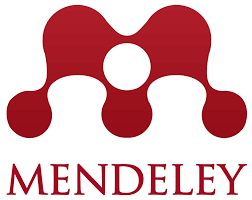Penerapan Model Pembelajaran Berbasis Proyek dengan Media Real Lab dan Virtual Lab untuk Meningkatkan Hasil Belajar dan Kemampuan Berpikir Kreatif Siswa dalam Materi Titrasi Asam Basa
Abstract
This study aims to determine the differences in chemistry learning outcomes and students' creative thinking abilities, as well as the correlation between the two students who are taught using the PjBL learning model using Real Lab media and Virtual Lab. While students' creative thinking skills use observation sheets. The data obtained from the results of the study, namely: (1) To test the hypothesis of student learning outcomes obtained tcount = 2.15 while ttable = 1.998 (2) To test the hypothesis of creative thinking abilities students obtained tcount = 3.40 while ttable = 1.998 ( 3) To test the correlation of creative thinking abilities on student learning outcomes obtained rtable = 0.339 while r1 = 0.391 and r2 = 0.403 with contributions of = 15.26% and 16.27% in each class, the rest is influenced by other variables. So that the conclusion is drawn that there is a difference between learning outcomes and students 'creative thinking abilities that are learned using PjBL learning models by using Real Lab media and Virtual Lab media. There is a positive and significant correlation between students' creative thinking abilities and student learning outcomes in each experimental class.
Keywords
Full Text:
PDFReferences
Devi, A., dkk. (2014). Perbedaan Implementasi Pembelajaran Kimia Model Problem Based Learning (PBL) Materi Stoikiometri Kelas X MIA SMA Negeri di Kota Surakarta Tahun Ajaran 2013/2014. Jurnal Pendidikan Kimia, 3(4): 126-135
Lerianti, E. (2014). Perbandingan Hasil Belajar Dengan Menggunakan Laboratorium Nyata Dan Laboratorium Virtual Dalam Materi Asam Basa Kelas XI IPA Sma Nusantara Kota Jambi. Skripsi, FKIP, Universitas Jambi, Jambi.
Marlinda, N. (2012). Pengaruh Model Pembelajaran Berbasis Proyek Terhadap Kemampuan Berpikir Kreatif Dan Kinerja Ilmiah Siswa. Skripsi, Program Pascasarjana, Universitas Pendidikan Ganesha, Bali.
Maula, M. (2014). Pengaruh Model Project Based Learning (PjBL)Terhadap Kemampuan Berpikir Kreatif Dan Hasil Belajar Siswa Pada Materi Pengelolaan Lingkungan. Skripsi, MIPA, Universitas Jember, Jawa Timur.
Prasetyo, P. A. (2016). Kreativitas Guru Mata Pelajaran Pendidikan Agama Islam Di SMP Negeri 1 Sumbergempol. Skripsi, FKIP, IAIN Tulungagung, Jawa Timur.
Sastrika, I., dkk. (2013). Pengaruh Model Pembelajaran Berbasis Proyek Terhadap Pemahaman Konsep Kimia Dan Keterampilan Berpikir Kritis. e-Journal Program Pasca Sarjana Universitas Pendidikan Ganesha, 3(1): 1-6
Silitonga, P.M. (2013). Metodologi Penelitian Pendidikan, FMIPA, Universitas Negeri Medan, Medan.
Totiana, F., Susanti, E., dan Redjeki, T. (2012). Efektivitas Model Pembelajaran Creative Problem Solving (CPS) Yang Dilengkapi Media Pembelajaran Laboratorium Virtual Terhadap Prestasi BelajarSiswa Pada Materi Pokok Koloid Kelas XI IPASemester Genap SMA Negeri 1 KaranganyarTahun Pelajaran 2011/2012. Jurnal Pendidikan Kimia, 1(1): 1-6.
Winarti, T., dan Nurhayati, S. (2014). Pembelajaran Praktikum Berorientasi Proyek Untuk Meningkatkan Keterampilan Proses Sains Dan Pemahaman Konsep. Jurnal Inovasi Pendidikan Kimia, 8(2): 14409-1420.
DOI: https://doi.org/10.24114/jipk.v1i2.15526
Article Metrics
Abstract view : 694 timesPDF - 401 times
Refbacks
- There are currently no refbacks.
CONTACT US
Chemistry Education Study Program
Chemistry Laboratory Bldg 19
Faculty of Mathematics and Natural Science
Universitas Negeri Medan
Jalan Willem Iskandar, Psr V Medan Estate, Medan Indonesia (20222)
Email: Jinovpkim@unimed.ac.id
Telp/WA: 082274239349; 081221555995; 081263935974














